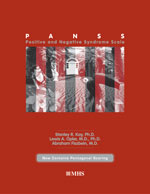
Stanley R. Kay, Ph.D., Lewis A. Opler, M.D., Ph.D., Abraham Fiszbein, M.D.

MHS is pleased to announce that it has transferred ownership of the Positive and Negative Syndrome Scale (PANSS) to Pearson Clinical Assessment. We believe that the PANSS assessment, the gold-standard assessment of schizophrenia, is a natural fit for the Pearson Clinical catalog of tests used in mental health evaluations. PANSS is widely used in clinical trials as the standard end point evaluation in research involving psychoses. Effective immediately, please contact Pearson Clinical Assessment to order the PANSS materials or to request a research license.
For pharmaceutical licensing: https://www.pearsonassessments.com/professional-assessments/featured-topics/pharma-research-services.html